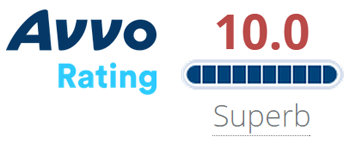Newsletter US Immigration December 1996
Volume One, Number Seven
 Shusterman’s Immigration Update is the Web’s most popular e-mail newsletter regarding U.S. immigration laws and procedures with over 40,000 subscribers located in more than 150 countries. It is written by a former INS Trial Attorney (1976-82) with over 30 years of experience practicing immigration law.
Shusterman’s Immigration Update is the Web’s most popular e-mail newsletter regarding U.S. immigration laws and procedures with over 40,000 subscribers located in more than 150 countries. It is written by a former INS Trial Attorney (1976-82) with over 30 years of experience practicing immigration law.
Published by the Law Offices of Carl Shusterman, 600 Wilshire Blvd, Suite 1550, Los Angeles, California, 90017. Phone: (213) 623-4592 x0.
Subscribe to our E-Mail Newsletter, join the conversation on our Immigration Facebook Page, follow our Blog Posts and subscribe to our “How-To” Immigration Videos.
Client Reviews

The Best Lawyer!
“I had the best experience working with Law Offices of Carl Shusterman. The staff is very professional, trustworthy, responsive, knowledgeable and helpful.”
- Dr. R. Khan, Boston, Massachusetts
Read More Reviews
Zoom Consultations Available!
Newsletter US ImmigrationDecember 1996 Topics
- 1. December 1996 State Department Visa Bulletin
- 2. Immigration Government Processing Times
- 3. Processing for INS District Offices and Sub-Offices
- 4. More New Immigration Bill Highlights
- 5. Immigration Trivia Quiz: Is the U.S. Overpopulated?
- 6. Physicians I: International Medical Graduate Web Page
- 7. Physicians II: List of Health Professional Shortage Areas
- 8. INS: Green Cards by “Direct Mail”
- 9. Lottery: DV-98 Rules Announced
- 10. Answers to the Immigration Trivia Quiz
TABLE OF CONTENTS:
1. December 1996 State Department Visa Bulletin
The State Department issued the December 1996 Visa Bulletin on November 8.
Most of the Family categories moved only slightly forward with categories advancing between one and five weeks. On the positive side, the Mexican 4th category (brothers and sisters of U.S. citizens) moved forward over eight months.
The Worldwide Employment categories remained “current” (no backlogs) except for the unskilled category which advanced over four months to September 22, 1989. The India 2nd category advanced almost six months while the 3rd category advanced six weeks. The Philippine 3rd category advanced five months while the 4th category became current.
For an explanation of what the categories, dates and symbols listed below mean, see
https://www.shusterman.com/greencardsthroughrelatives.html
and
https://www.shusterman.com/greencardsthroughemployment/
FAMILY CATEGORIES
| Categories | Worldwide | India | Mexico | Philippines |
|---|---|---|---|---|
| 1st | 2-08-96 | 2-08-96 | 3-22-92 | 7-01-86 |
| 2A | 2-01-93 | 2-01-93 | 5-01-92 | 2-01-93 |
| 2B | 1-01-91 | 1-01-91 | 1-01-91 | 1-01-91 |
| 3rd | 9-22-93 | 9-22-93 | 12-01-87 | 9-08-85 |
| 4td | 5-15-86 | 12-01-84 | 3-22-85 | 11-07-77 |
EMPLOYMENT CATEGORIES
| Categories | Worldwide | India | Mexico | Philippines |
|---|---|---|---|---|
| 1st | Current | Current | Current | Current |
| 2nd | Current | 5-08-95 | Current | Current |
| 3rd | Current | 3-15-94 | Current | 1-01-96 |
| Unskilled | 9-22-89 | 9-22-89 | 9-22-89 | 9-22-89 |
| 4td | Current | Current | Current | Current |
| 5td | Current | Current | Current | Current |
2. Immigration Government Processing Times
 We link to the most recent immigration waiting times for each of the four USCIS Service Centers, the National Benefits Center and the Administrative Appeals Office. We also link to the processing times of all of the 83 USCIS District Offices and Sub-offices. We link to the Labor Department’s page entitled “Processing dates for labor certification applications”. Finally, we link to the State Department’s “Visa Wait Times” page.
We link to the most recent immigration waiting times for each of the four USCIS Service Centers, the National Benefits Center and the Administrative Appeals Office. We also link to the processing times of all of the 83 USCIS District Offices and Sub-offices. We link to the Labor Department’s page entitled “Processing dates for labor certification applications”. Finally, we link to the State Department’s “Visa Wait Times” page.
3. Processing for INS District Offices and Sub-Offices
Although most petitions and applications for immigration benefits are submitted to the four INS Regional Service Center mentioned in Topic #2 above, a significant number must be submitted to one of the many INS District and Sub-Offices located in various cities across the U.S.
If you wish to learn the average processing times for
- 1) Applications for Adjustment of Status to Permanent Residence (form I-485)
- 2) Work Permits (form I-765)
- 3) Travel Permits (form I-131)- also known as “Advanced Parole”
and
- 4) Naturalization (form N-400) at INS District Offices across the U.S., click on
and scroll down to “Waiting Times for INS District Offices”. Click on whichever of the 40+ offices has jurisdiction over your application.
Statistics are reported by monitors from the American Immigration Lawyers Association around the country.
Warning: These statistics have not been approved for publication by the INS. Waiting times may vary depending on the facts of the particular application. Also, see Topic #8 below for a list of applications which formerly were submitted to INS District Offices, but now are be filed with one of the Service Centers.
4. More New Immigration Bill Highlights
To read an article highlighting ten significant provisions of the new law, see
https://www.shusterman.com/1996immigrationlawsummary.html
For a brief history of the law, see
here
The complete text of the 300-plus page law may be found by going to
this site
and clicking
“Complete Text of the 1996 Bill”
In order to shorten your download time for reading the particular sections of the act which interest you, we have divided the law into six clickable titles, each displaying the individual sections under each title. When you locate the section which you want to read, simply click on the appropriate title and scroll down to the section you wish to read.
For an analysis of the sections of the new law which may affect you, see
https://www.shusterman.com/greencardsusing245i.html
and under the heading entitled “Analysis of the 1996 Law”, click on the individual topic which interests you. If you do not see what you want, send me an e-mail message and suggest a topic.
5. Immigration Trivia Quiz: Is the U.S. Overpopulated?
Immigration advocates frequently assert that we are a “nation of immigrants” and that any reductions in legal immigration would not only be unfair to the U.S. citizen relatives and petitioning employers of potential immigrants, but would amount to a betrayal of the principles upon which our country was founded.
Immigration restrictionists argue just as forcefully that large-scale immigration only made sense when we were a frontier society, and it is time to drastically diminish the number of immigrants (currently about 800,000 annually) that the U.S. admits. Many argue that the U.S. is “overpopulated”.
I did a little library research to find out which countries and colonies around the world had the greatest density of population.
The three questions which comprise this month’s immigration trivia quiz are as follows: 1) Which five countries/colonies are the most densely populated in the world? 2) Is the U.S. more or less densely populated than our “mother country”, the United Kingdom? 3) Is the U.S. more or less densely populated than the world-at-large? Answers contained in Topic #10
6. Physicians I: International Medical Graduate Web Page
Many sections of the immigration laws affect International Medical Graduates (IMGs) who were born abroad, received their medical education abroad, and entered the U.S. to receive training in the form of medical residencies and fellowships.
Past issues of SHUSTERMAN’S IMMIGRATION UPDATE have attempted to keep you abreast of new developments affecting IMGs who have obtained J visas, H-1B visas or other types of employment authorization.
More and more, IMGs are organizing, exchanging information about obtaining residencies, fellowships, waivers of the home residency requirement, and finding employment in the U.S.
Recently, I was contacted by Dr. Alexander Feoktistov, a native of Latvia who is a resident in Internal Medicine at St. Luke’s/Roosevelt Health Center in New York. Dr. Feoktistov maintains a excellent web site entitled “IMGWeb”. It contains valuable information about the IMG Community on the Web, residency programs, publications, medical organizations and links to a number of other related sites.
Dr. Feoktistov requested that I attempt to provide generalized answers to IMGs who require immigration advice. Although, it is not my policy to answer e-mail questions (I receive over 100 such requests per week!), I agreed to accommodate Dr. Feoktistov (or “Alex” as he prefers to be called).
So, if you are an IMG, and you have an immigration question which requires a BRIEF answer, first see
https://www.shusterman.com/physiciansusimmigration.html
and read the articles listed there. If none of these articles answers your question, click on “IMG Web Page”, and scroll down to the words “To send a question, please follow this link” and click again. I will try to answer your questions as long as they are brief and to the point. Dr. Feoktistov posts the questions and answers in a section of the “IMGWeb” called the “Forum”. However, if you have a long story or a complex fact pattern to relate, I would appreciate if you would call my receptionist at (213) 623-4592 (213) 623-4592 to arrange a telephonic consultation with me.
7. Physicians II: List of Health Professional Shortage Areas
IMGs who are in J-1 exchange visitor status are legally obligated to return to their home countries for two years after completing their residencies or fellowships. However, last year, well over 1,000 IMGs received waivers of this requirement by agreeing to practice primary care in a federally-designated medically underserved area.
The Federal Register, a daily publication of the federal government, last issued a comprehensive listing of Health Professional Shortage Areas (HPSAs) designated by the Department of Health and Human Services on October 2, 1995. I have had a link to this listing on my web site for over one year. Unfortunately, the list is so voluminous that, even with a fast modem, it can take over 30 minutes to download the complete list.
Adopting the philosophy that was imparted to me by a good friend of mine from the Indian subcontinent (“Even an elephant can be eaten, bite by bite!”), I spent several hours creating a table of U.S. states and territories and slowly breaking down the Federal Register listing into small pieces.
Also, some federal agencies will sponsor physicians who are willing to work in Medically Underserved Areas (MUAs) or for Medically Underserved Populations (MUPs). To learn whether your job opportunity is in an MUA/MUP, please call my office at (213) 623-4592 (213) 623-4592 , and leave a message for Elahe, Judith or Pamela. Give them the exact location of the facility, and they will check whether it is in an MUA/MUP. I am attempting to obtain an electronic copy of the MUA/MUP list so I can post it on the web. If you have such a copy, please let me know!
8. INS: Green Cards by “Direct Mail”
As of November 29, 1996, INS expanded the “Direct Mail” program to allow the following types of applications to be submitted to one of the four Service Centers rather than to the District Offices:
A) Applications for Adjustment of Status to Permanent Resident (where the approved petition is employment-based)B) Applications for a Travel Document (for the purpose of obtaining advanced parole for traveling outside the U.S. pursuant to an employment-based form I-485)C) Application for Employment Authorization (in connection with an employment-based form I-485)
Until January 28, 1997, an applicant may submit any of the above applications to one of the four Service Centers or to his local INS District Office. After that date, only the four Service Centers will have jurisdiction to accept these applications.
9. Lottery: DV-98 Rules Announced
We e-mailed an Emergency Alert of SHUSTERMAN’S IMMIGRATION UPDATE, on November 18, 1996, the same day that the State Department released its rules on the DV-98 Visa Lottery.
To answer some of your most commonly-asked questions: (1) Your application must be received by the government between February 3 and March 5, 1997; (2) Those who were not eligible for the DV-97 lottery probably will not be eligible for the DV-98 lottery; (3) Most people born in Poland will be ineligible for the DV-98 lottery; and (4) You DO NOT need to pay an attorney to submit an application for you. This is one of the few immigration procedures which is simple enough that you can complete it on your own, at least if you read the rules carefully.
10. Answers to the Immigration Trivia Quiz
1) Contrary to the anecdotal experience of the typical rush-hour commuter in almost any major American city, the U.S. does not rank anywhere near the top five most densely populated places on the earth. Those countries/ colonies that do are as follows:
- A) Macau – 25,841 persons per square kilometer
- B) Monaco – 16,559 persons per square kilometer
- C) Hong Kong – 5,748 persons per square kilometer
- D) Singapore – 4,754 persons per square kilometer
- E) Gibraltar – 4,459 persons per square kilometer
If population-density is per se bad, isn’t it odd how many tourists from New York, Los Angeles, Chicago and Miami consider the above destinations to be popular vacation spots. Admittedly, each of the above places are quite small in area.
You may wonder dear reader what is the population density of a typical industrialized country? If so, read on.
2) In the United Kingdom which consists of England, Scotland, Wales, Northern Ireland and a number of sparsely-populated islands, the average population density is 239 persons per square kilometer.
How does this compare to the population density in the U.S.? Believe it or not, the average population density in the U.S. is only 28 persons per square kilometer, less than 12% of that in the U.K.! Given this enormous difference, isn’t it amazing how many Americans queue up to see Big Ben and the Tower of London every year?
3) Finally, how does the population density in the U.S. stack up with that in the rest of the world? Worldwide, the average population density (which includes the low U.S. average) is 42 persons per square kilometer, or 66.6% higher than the U.S. figure.
Perhaps those who think the U.S. is in danger of becoming overpopulated may want to pick up some inexpensive options on real estate in Greenland or Antarctica in time for their retirement. In any case, with one of the lowest birthrates in the world, it is doubtful that allowing an amount less than one-third of one percent of our population to immigrate to the U.S. annually will lead to the U.S. becoming an “overpopulated” country anytime within the next few hundred years. Am I relieved!
ERRATA: In the October issue of SHUSTERMAN’S IMMIGRATION UPDATE, we congratulated Mother Teresa for being the first woman to become an honorary citizen of the U.S. It has come to our attention through one of our more erudite subscribers that, in 1984, Hannah Callowhill Penn was awarded U.S. citizenship immediately after her husband William. Apparently then, Mother Teresa is the second, rather than the first, woman to become an honorary citizen of the U.S.
Carl Shusterman, Esq.
Former INS Attorney (1976-82)
Certified Specialist in Immigration and Nationality Law
Board of Legal Specialization
State Bar of California
Tel:(213)623-4592
Fax:(213)623-3720
Web Site: https://www.shusterman.com
Newsletter US Immigration December 1996 – Quick Links
About Us
Back Issues of Our Newsletter
Citizenship
Client Testimonials
Forms Download
Green Cards
Job Search
PERM
Processing Times
Schedule a Legal Consultation
Subscribe to Our Newsletter
Success Stories
Temporary Visas
Visa Bulletin
December 1, 1996








